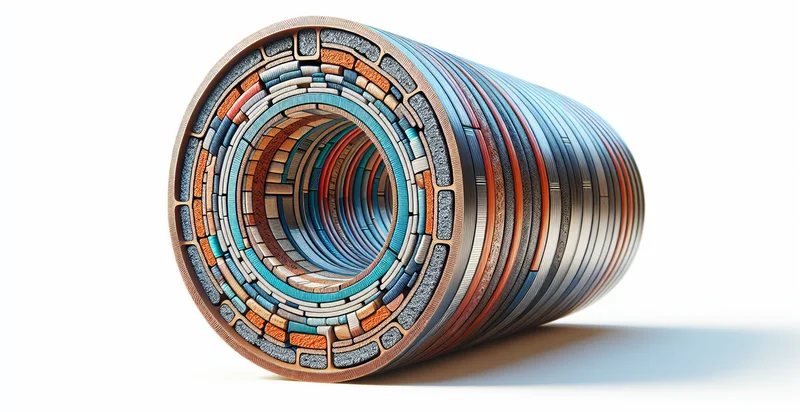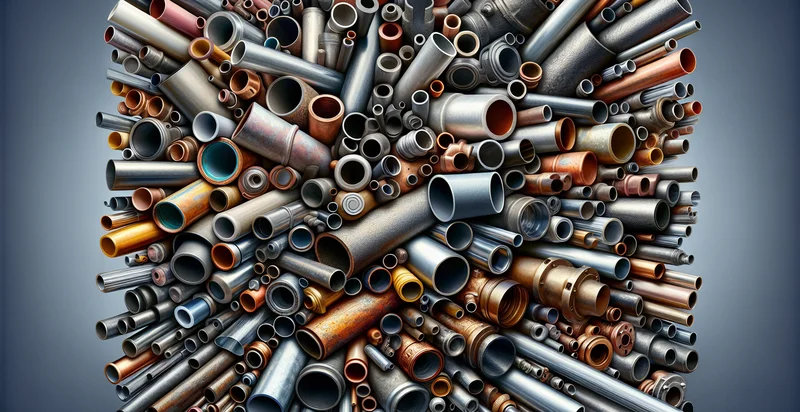Identify what material a pipe is made from
using AI
Below is a free classifier to identify what material a pipe is made from. Just upload your image, and our AI will predict what material the pipe is made from - in just seconds.

Contact us for API access
Or, use Nyckel to build highly-accurate custom classifiers in just minutes. No PhD required.
Get started
import nyckel
credentials = nyckel.Credentials("YOUR_CLIENT_ID", "YOUR_CLIENT_SECRET")
nyckel.invoke("what-material-a-pipe-is-made-from", "your_image_url", credentials)
fetch('https://www.nyckel.com/v1/functions/what-material-a-pipe-is-made-from/invoke', {
method: 'POST',
headers: {
'Authorization': 'Bearer ' + 'YOUR_BEARER_TOKEN',
'Content-Type': 'application/json',
},
body: JSON.stringify(
{"data": "your_image_url"}
)
})
.then(response => response.json())
.then(data => console.log(data));
curl -X POST \
-H "Content-Type: application/json" \
-H "Authorization: Bearer YOUR_BEARER_TOKEN" \
-d '{"data": "your_image_url"}' \
https://www.nyckel.com/v1/functions/what-material-a-pipe-is-made-from/invoke
How this classifier works
To start, upload your image. Our AI tool will then predict what material the pipe is made from.
This pretrained image model uses a Nyckel-created dataset and has 21 labels, including Aluminum, Brass, Cast Iron, Ceramic, Clay, Composite, Concrete, Copper, Fiberglass and Glass.
We'll also show a confidence score (the higher the number, the more confident the AI model is around what material the pipe is made from).
Whether you're just curious or building what material a pipe is made from detection into your application, we hope our classifier proves helpful.
Related Classifiers
Need to identify what material a pipe is made from at scale?
Get API or Zapier access to this classifier for free. It's perfect for:
- Material Verification in Construction: Construction companies can leverage the material identification function to ensure that pipes used in building projects are compliant with specifications. This can help prevent costly errors and delays that arise from using incorrect materials, ultimately leading to safer and more reliable structures.
- Quality Control in Manufacturing: Manufacturing plants that produce pipes can implement this function as part of their quality control process. By quickly identifying the material of finished products, they can verify that their pipes meet industry standards and customer requirements, enhancing product quality and reducing waste.
- Maintenance in Oil and Gas Industry: In the oil and gas sector, maintaining pipelines is critical for operational safety. This function can assist technicians in identifying pipe materials during inspections, allowing them to choose appropriate repair methods and materials, thereby extending the lifespan of pipelines and preventing leaks.
- Recycling and Material Recovery: Recycling facilities can utilize the identifier to ascertain the material composition of pipes that are brought in for recycling. Accurate identification aids in sorting and processing, ensuring higher recovery rates of valuable materials and optimizing recycling operations.
- Inventory Management for Distributors: Pipe distributors can apply this function to manage their inventory effectively. By knowing the material of their stocked pipes, they can streamline their sales process, ensuring they provide the right materials to customers for specific applications without miscommunication.
- Compliance with Environmental Regulations: Companies must adhere to environmental regulations regarding material usage. By using this classification function, organizations can ensure that they are using compliant materials and can provide documentation and reports that support their adherence to environmental standards.
- Consumer Education in Plumbing Services: Plumbing service providers can incorporate this identifier to educate homeowners about their plumbing systems. By determining the materials used in existing pipes, plumbers can advise customers on potential upgrades or replacements, enhancing service effectiveness and customer satisfaction.


